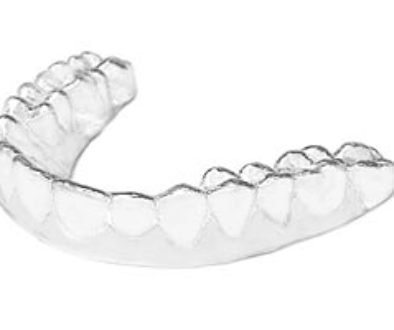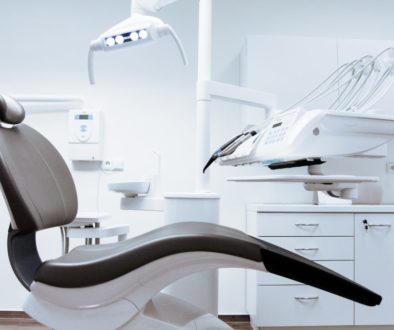Needle Free Dentistry
 I get asked all the time if there is ANY possible way that dentistry can be done without giving shots! The shot is usually the most feared part of the whole procedure and I think most people would dread the dentist far less if that part could be done away with. So, is there any way that dentistry can be done without giving a shot? Let’s see what the current options are and what is possibly coming in the future.
I get asked all the time if there is ANY possible way that dentistry can be done without giving shots! The shot is usually the most feared part of the whole procedure and I think most people would dread the dentist far less if that part could be done away with. So, is there any way that dentistry can be done without giving a shot? Let’s see what the current options are and what is possibly coming in the future.
Air abrasion
Air abrasion has actually been around for a long time in dentistry but is used infrequently in actual practice. Instead of using a drill, your dentist uses a special air abrasion unit that propels a fine stream of abrasive particles (usually aluminum oxide) at the tooth. There are a several benefits to using an air abrasion unit over a typical dental drill.
Pros:
- No need for numbing in most cases
- Can remove decayed tooth structure as well as old white fillings
- No high pitched whine
- Minimal pressure, vibration, and heat
- Less micro-damage to the enamel
- Better bonding of fillings to the tooth
Cons:
- Can’t be used to remove crowns, old amalgam fillings, or additional enamel
- Best used for small cavities, sealants, or preventative resin restorations (PRR’s) and not large cavities.
- Makes a mess!
Lasers
Compared to air abrasion, lasers that are able to cut teeth are a very new invention in dentistry. There are currently three main types of lasers used to cut teeth: ND-YAG, Erbium, and CO2.
Pros:
- It is rare to need to numb the tooth. The specific laser pulses deactivate the nerve fibers temporarily.
- No high pitched whine. Instead you hear typically hear a quiet “pop, pop” noise.
- Less micro-damage to the enamel.
Cons:
- Currently these laser units are very large and very expensive ($100,000+) putting them out of reach of most dentists.
- Can only cut certain materials.
- Requires better magnification and technical skills than with a dental drill.
Topical Anesthetics
For procedures that only involve the gum tissue and not the teeth, such as scaling and root planing or removal of a loose baby tooth, topical anesthetics can often be used just to numb the gum tissue. Typical topical anesthetics such as 20% benzocaine have been used for years in dentistry but aren’t terribly effective. Newer topical anesthetic preparations are much more effective than benzocaine, making such procedures more comfortable. The most well known topical anesthetic product used for scaling and root planing is known as Oraqix. It is a combination of lidocaine and prilocaine that can be placed gently under the gum tissue around teeth. It is very effective for 4-6 mm periodontal pockets but doesn’t do as well for more severe cases. Dentists have experimented for years with other topical combinations including EMLA, TAC, and other specially compounded anesthetics.
There are a couple of downsides and risks associated with topical anesthetics that generally aren’t present with injected anesthetics…
- Unknown dosage. Most topical anesthetics come as a gel and only a portion is absorbed into the body. This makes it difficult to calculate exactly how much you have received. Overdoses of anesthetics can be dangerous. Fortunately in dentistry this is extremely rare as we are usually working on small areas. Children are at the most risk.
- Many topical anesthetics contain ester type anesthetics. There are more allergy issues with these types of anesthetics than with the newer and more commonly used amide anesthetics. There is also a risk of a condition known as methemoglobinemia.
- Much more challenging to get good adequate numbness of the area.
Good topical anesthetics can also make the actual shot painless for the most part.
Coming Very Soon:
Better topical anesthetic. There have been rumors that a new, much more effective topical anesthetic for dentistry will be making it’s way onto the market shortly. Hopefully this will be even more effective than Oraqix and have more applications including painless shots in all locations of the mouth.
A nasal spray that can numb teeth numbers 4-13 (bicuspid to bicuspid). This was recently approved by the FDA for dental treatment and should be making its way into dental offices shortly.
Possibilities
One recent study published by a research group in Brazil shows some promise with using topical anesthetics applied with a small electric current (iontophoresis). The current helps the anesthetics to be absorbed at much higher rate than they would otherwise. The hope is that one day we can apply anesthetics topically that will be strong enough to numb the gum tissue as well as the teeth in the area. Other possibilities currently being studied are using chemicals or ultrasound to increase the absorption of the anesthetics as well.



